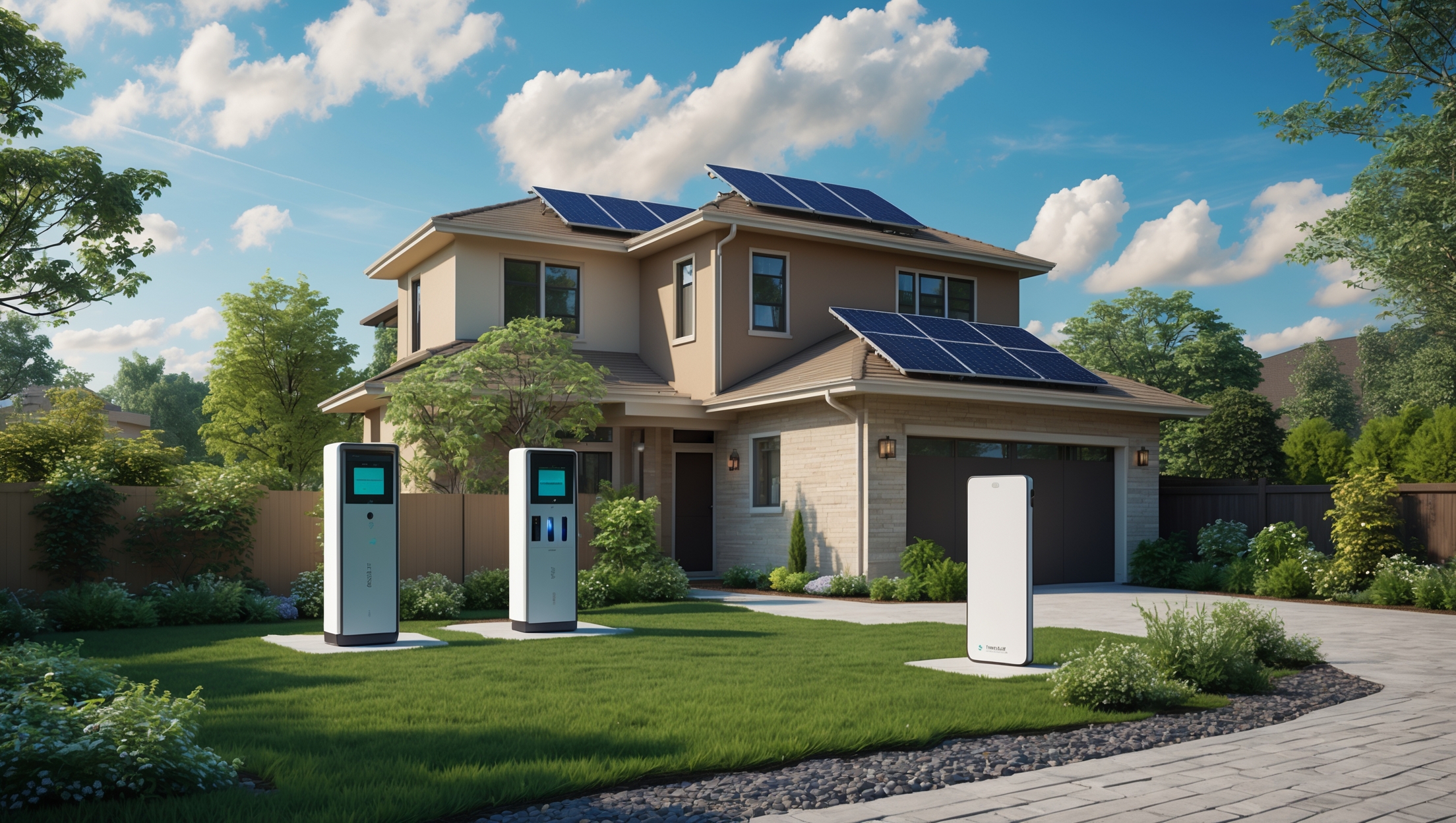Introduction: The Rise of DIY Hydrogen Fuel Cell Systems at Home
As the world searches for cleaner, renewable energy solutions, hydrogen fuel cells have emerged as a promising technology for homeowners seeking to reduce their carbon footprint and achieve energy independence. While solar and wind installations are now common sights in eco-conscious neighborhoods, hydrogen fuel cell systems remain on the frontier—especially those assembled by resourceful DIY enthusiasts. These systems offer a unique blend of energy storage, on-demand power generation, and compatibility with other green technologies. However, they also introduce specific risks and responsibilities, particularly when it comes to insurance coverage. Unlike traditional home systems, hydrogen fuel cell setups involve high-pressure gases, flammable materials, and advanced electrical components. For homeowners investing time and resources into a DIY installation, understanding insurance essentials is not just prudent—it’s critical to both personal safety and long-term financial protection. This guide dives deep into the insurance landscape for home hydrogen fuel cell systems, outlining common gaps, best practices for risk mitigation, and actionable steps to ensure your sustainable energy project is comprehensively protected.
Understanding Home Hydrogen Fuel Cell Systems
What Are Hydrogen Fuel Cells?
Hydrogen fuel cells convert hydrogen and oxygen into electricity, producing water and heat as byproducts. At the residential scale, these systems can provide backup power, supplement solar or wind energy, and even power electric vehicles. DIY systems typically include:
- Electrolyzers for on-site hydrogen production
- High-pressure hydrogen storage tanks
- Fuel cell stacks for electricity generation
- Control electronics and safety systems
Risks Unique to Hydrogen Fuel Cell Systems
While hydrogen is a clean fuel, it presents distinct hazards:
- High flammability and explosive potential
- Pressurized storage and risk of leaks
- Complex electrical and chemical components
- Potential incompatibility with standard home insurance policies
Insurance Basics: What Coverage Is Typically Needed?
Homeowner’s Insurance and Green Technology
Most standard homeowner’s insurance policies are designed for conventional risks: fire, theft, weather, and liability. While some policies have started to accommodate solar panels and battery backups, hydrogen fuel cell systems are often excluded or require additional endorsements. Insurers may treat these systems similarly to swimming pools or wood stoves—potentially increasing liability and requiring disclosures or policy adjustments.
Key Areas of Coverage
- Property Coverage: Protects your home and personal property from damage caused by the fuel cell system, such as fire or explosion.
- Liability Coverage: Shields you if someone is injured or property is damaged due to the system’s operation or failure.
- Equipment Breakdown: Optional add-on that can cover costs of repair or replacement if the system fails due to mechanical or electrical issues.
- Environmental Liability: Relevant if a hydrogen leak causes environmental harm or contamination.
Common Insurance Gaps for DIY Hydrogen Fuel Cell Systems
Exclusions in Standard Policies
Many policies specifically exclude “unapproved alterations,” “experimental energy systems,” or “hazardous materials.” This can leave DIY fuel cell owners exposed to uncovered losses in the event of system failure or accident.
Documentation and Permitting Shortfalls
Insurers may deny claims if the system was installed without proper permits or fails to meet local code requirements. DIY installations—especially those using non-certified components—are at greater risk of being deemed non-compliant.
Valuation and Underinsurance
Insufficient documentation of system costs and value can result in inadequate compensation after a loss. Homeowners often underestimate the replacement cost of custom-built or imported components.
How to Approach Insurers: Steps to Secure Coverage
Step 1: Document Your System Thoroughly
- Take detailed photos of each stage of installation
- Keep receipts for all system components, tools, and labor
- Maintain a logbook of modifications and maintenance
- Store copies of all permits and inspection reports
Step 2: Consult with Your Insurance Agent Early
Before installation begins, contact your insurance provider. Provide a system overview, installation plans, and any supporting documentation. Ask:
- Will my current policy cover this system?
- Are there specific requirements or safety standards I must meet?
- Can I purchase an endorsement or rider for expanded coverage?
Step 3: Shop for Specialized Green Technology Coverage
If your current insurer is unable or unwilling to provide adequate coverage, seek out companies specializing in green home technologies or commercial energy systems. These insurers are more likely to understand the risks and offer tailored protection.
Risk Mitigation: Making Your System Insurable
Design and Installation Best Practices
- Use certified components and follow manufacturer specifications
- Install hydrogen sensors and automatic shut-off valves
- Ensure adequate ventilation and distance from living spaces
- Incorporate pressure relief devices and explosion-proof fittings
- Engage a licensed electrician for all electrical connections
Permitting and Inspections
Obtain all required permits before starting work. Arrange for local building, fire, and environmental authorities to inspect the system upon completion—and after any major modifications. Approved inspections improve your insurability and provide critical documentation in the event of a claim.
Maintenance and System Logs
- Schedule regular system inspections (at least annually)
- Test for leaks and sensor functionality monthly
- Record all maintenance and repairs in a dedicated log
Liability and Safety: Protecting Yourself and Others
Personal Liability Scenarios
If a hydrogen leak or explosion causes injury to a neighbor or damages adjacent property, you could be personally liable. This extends to visiting contractors, delivery personnel, or even trespassers. Comprehensive liability coverage is essential.
Safety Checklist for Insurability
- Install visible emergency shut-off switches
- Post clear hazard signage near the system
- Keep fire extinguishers (Class B and C) accessible nearby
- Train household members on emergency procedures
- Maintain safe storage of hydrogen cylinders (upright, secured, away from ignition sources)
Case Example: Navigating Insurance for a DIY Hydrogen System
Consider the experience of a homeowner in Colorado who installed a 2 kW hydrogen fuel cell system to supplement solar power. The system included a DIY electrolyzer, high-pressure storage tanks, and a commercial fuel cell stack. The homeowner:
- Secured all relevant permits and passed local fire safety inspections
- Documented every component and installation step
- Contacted their insurer prior to installation, submitting all documents
- Purchased an equipment breakdown rider and increased liability coverage
When a minor hydrogen leak triggered a sensor and automatic shut-off, the homeowner filed a claim to replace a damaged valve. The insurer processed the claim without issue, citing the thorough documentation and compliance. This example underscores the importance of transparency and preparation.
What to Do If You Can’t Get Coverage
If all attempts at securing insurance fail, you face a difficult decision. Operating a DIY hydrogen fuel cell system without coverage exposes you to significant financial and legal risk. Alternatives include:
- Downsizing your system to non-pressurized, low-volume setups
- Switching to commercially installed, certified systems (often easier to insure)
- Joining co-operative insurance groups focused on experimental or renewable technologies
- Reaching out to local governments for pilot projects with shared liability structures
Frequently Asked Questions
Will my insurer cover a DIY hydrogen fuel cell if I install it myself?
Most mainstream insurers are cautious. Coverage is more likely if you use certified components, secure all permits, and pass inspections. Some may require professional installation or special endorsements.
Is equipment breakdown coverage necessary?
While not mandatory, it’s highly recommended. Hydrogen systems can be costly to repair, and standard policies rarely cover mechanical or electrical breakdowns.
How do I calculate the replacement value of my system?
Keep all receipts for parts, tools, and labor. If you’ve used repurposed or imported components, document market value with third-party quotes or appraisals.
Conclusion: Safeguarding Your Green Investment
DIY hydrogen fuel cell systems represent the cutting edge of sustainable home energy, offering transformative benefits in energy independence and environmental impact. Yet, these advantages are balanced by significant technical complexities and insurance challenges. Protecting your investment isn’t just about safeguarding your property—it’s about ensuring the safety of your family, neighbors, and community. By thoroughly documenting your project, adhering to local codes, investing in safety features, and proactively engaging with your insurer, you can minimize risks and secure meaningful coverage. If traditional insurance providers fall short, don’t be discouraged. The landscape is rapidly evolving as more homeowners adopt advanced green technologies. New products, co-operative insurance models, and specialized policies are emerging in response to demand. In the meantime, prioritize safety, compliance, and transparency. Your commitment not only protects your home but also sets a valuable example for others considering the transition to future energy solutions. With careful planning and the right protections in place, your DIY hydrogen fuel cell system can be a source of both sustainable power and peace of mind for years to come.





What specific steps can I take to minimize risks and make my homemade hydrogen fuel cell system more insurable—are there recommended safety upgrades, inspections, or certifications that insurers look for?
To minimize risks and improve your system’s insurability, install certified hydrogen detectors, proper ventilation, and flame arrestors. Use high-quality, pressure-rated components and ensure electrical systems comply with recognized standards. Arrange for inspections by a licensed professional or certified hydrogen safety expert. Keep documentation of all upgrades and safety checks. Some insurers may also value third-party certifications or adherence to international hydrogen safety standards.
I’m curious about how standard homeowners insurance policies typically handle DIY hydrogen fuel cell systems. Do most insurers consider these setups as hazardous, and are there exclusions that homeowners should specifically watch out for when installing high-pressure hydrogen tanks?
Most standard homeowners insurance policies view DIY hydrogen fuel cell systems, especially those with high-pressure hydrogen tanks, as higher risk due to their flammable and potentially hazardous nature. Many insurers may exclude coverage for damages or liability related to unapproved modifications, hazardous materials, or energy systems not installed by licensed professionals. It’s important to notify your insurer before installation, review your policy for exclusions, and consider seeking a policy endorsement or specialty coverage if needed.
For someone on a tight budget, are there any insurance options or strategies to keep premiums reasonable when adding a hydrogen fuel cell at home, considering the extra risks of pressurized tanks and flammable gases discussed here?
You can help keep insurance premiums manageable by improving safety measures, such as installing certified leak detectors, proper ventilation, and using professionally approved storage tanks. Check with your current insurer about discounts for added safety features. It might also help to raise your deductible to lower monthly costs. Finally, compare quotes from several insurers to find one familiar with hydrogen systems, as experience can sometimes mean better rates.